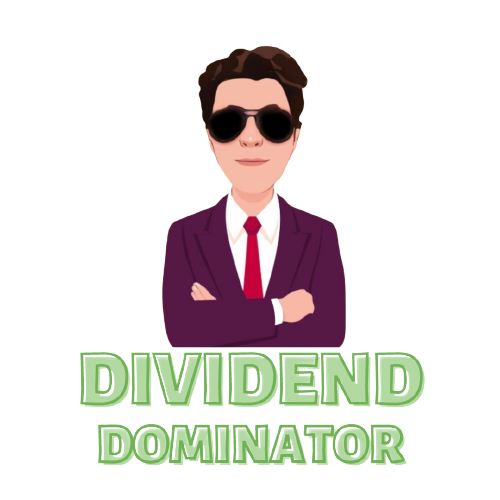
Welcome to The Profit Zone 👋
Where 12,700+ millionaires, CEO’s and high-performing entrepreneurs read the #1 financial newsletter on the web.
Happy Monday!
Let’s start the week off strong.
The agenda for today:
👉 Quote of the week
👉 What the hell is going on with GameStop?
👉 The best measurement of your return relative to your risk

"It's not whether you're right or wrong that's important, but how much money you make when you're right and how much you lose when you're wrong."
What the hell is going on with GameStop?

GameStop saw yet another rally this past week partially fuelled by a man named Keith Gill, the owner of an X account called “Roaring Kitty”, one of the key figures who helped propel the stock to new heights back in 2021.
Less than a week ago, the stock hit a high of $64.83, up more than 200% from its close on May 10th.
However the hype failed to last very long, with shares tumbling almost 20% on Friday after the retailer said it plans to sell 45 million class A common shares and reported preliminary results that were, well… disappointing.
A Wedbush analyst, Michael Pachter, who covers the stock said that the company is “not in a position to be profitable”.
As per Michael, they made $6 million last year and burned all kinds of cash. The consensus is that they lose $100 million a year going forward and that they have “no plan that would suggest they can grow revenues or profits”.
DD’s Take:
I like to watch these meme stocks from the sidelines. I have zero FOMO but find it interesting how one single person can have such an impact on the stock market, causing dying businesses to skyrocket with no real substance for growth.
I’ll be keeping tabs on how this story unfolds once again, but to enter into a position in this stock would be gambling, and that goes against my investing principals.
Learn AI in 5 Minutes a Day
AI Tool Report is one of the fastest-growing and most respected newsletters in the world, with over 550,000 readers from companies like OpenAI, Nvidia, Meta, Microsoft, and more.
Our research team spends hundreds of hours a week summarizing the latest news, and finding you the best opportunities to save time and earn more using AI.
A Ratio You Didn’t Know You Needed
The Sharpe Ratio
The Sharpe ratio is a financial metric that tells investors how an investment is performing relative to its total risk.
The higher a stocks investment risk ratio is, the more of a return it will offer relative to its risk. The reverse is also true.
This ratio is used in long term investing, so if you’re a day trader you can stop reading now.
Let’s dive in.
Every investment you make is going to come with some sort of risk. Understanding these risks puts you at an advantage over the average investor.
Why?
Because people will blindly buy a stock based on the “promise” of 100x gains without ever knowing the risk associated with it. Then whine when the stock price falls 40% and call the stock market a scam.
How can this be avoided?
By understanding the risks of what you’re buying.
Before you dive into a new investment, it’s vital that you understand whether the time and money you put in will be worthwhile.
This is where the Sharpe ratio comes into play.
So what is this magical ratio?
It’s a financial metric that will allow you to determine whether the risk you’re taking on has generated high enough returns compared to the returns you might have seen without taking on risk.
You can evaluate it on individual stocks or even your entire portfolio.
Here’s how you calculate it yourself.
But don’t worry, you can google the ratio and save time instead of doing math.
To calculate the Sharpe Ratio on your portfolio you need:
Your portfolio’s rate of return or expected rate of return
The risk free rate (Treasury Bills for example)
The standard deviation of your portfolio’s excess return

Let’s look at an example:
Say you own one single asset called Stock ABC.
Stock ABC has a 5-year return of 50%.
The 5-year treasury bill has a risk free rate of 4.5%.
Let’s assume the standard deviation is 15%.
Sharpe Ratio = (50 - 4.5) / 15
Sharpe Ratio = 45.5 / 15
Share Ratio = 3.03
What does this mean?
Less than 1 = bad
1+ = good
2+ = great
3+ = excellent
A higher ratio means that the risk you’re taking on is paying off in the form of returns that are considered “above average”.
If you find yourself with a Sharpe Ratio of 0, that’s a bad sign.
It means you’re taking on risk to generate a return that is matching the “risk-free” treasury bill rate.
Let’s look at some common companies and their respective Sharpe Ratio’s:
Apple = 0.52
Nvidia = 4.17
Amazon = 2.35
Costco = 3.58
Walmart = 1.77
Tesla = 0.88
AliBaba = -0.26
From this list, you can see that Nvidia’s and Costco’s returns relative to their risk are the greatest. This doesn't mean they’re necessarily good long term investments, however over the past 12 months, investors have been rewarded greatly for the risk they took on.
See you in the next one!
Special Offer
For a limited time, you can join The Profit Zone Premium for 50% off.
As a premium member, you’ll get access to our bi-monthly premium newsletters where I reveal secrets and information free subscribers don’t get to see.
This includes my portfolio breakdowns, what I’m buying and why, what dividend stocks I like and much more.
This offer is only valid until Wednesday at 11:59 PM EST, and then the price goes back up.

Click here to join for 50% off.
Miss last weeks newsletter? Read it below:

Sponsor The Profit Zone
Want to get more eyes on your products?
Advertise to 12,700+ investors hungry for financial content.
Click below to book with us.
Did you enjoy this newsletter?

My Website - a one-stop shop for all things dividend investing.
Financial Domination - learn how to set up an effective budget, figure out your investor profile, use stock screeners and rebalance your portfolio without paying someone to do it for you.
The Complete Investors Accelerator Pack - everything you need to build a dividend portfolio that grows on itself. Learn more about dividend investing, how to analyze dividend stocks, what to do with your dividends and how to build a stream of passive income through the stock market.
Beehiiv - sign up for Beehiiv and start your own newsletter today.
TweetHunter - let the software do the tweeting for you. The only scheduler you’ll ever need. This tool makes me money in my sleep. Give it a try for free.






